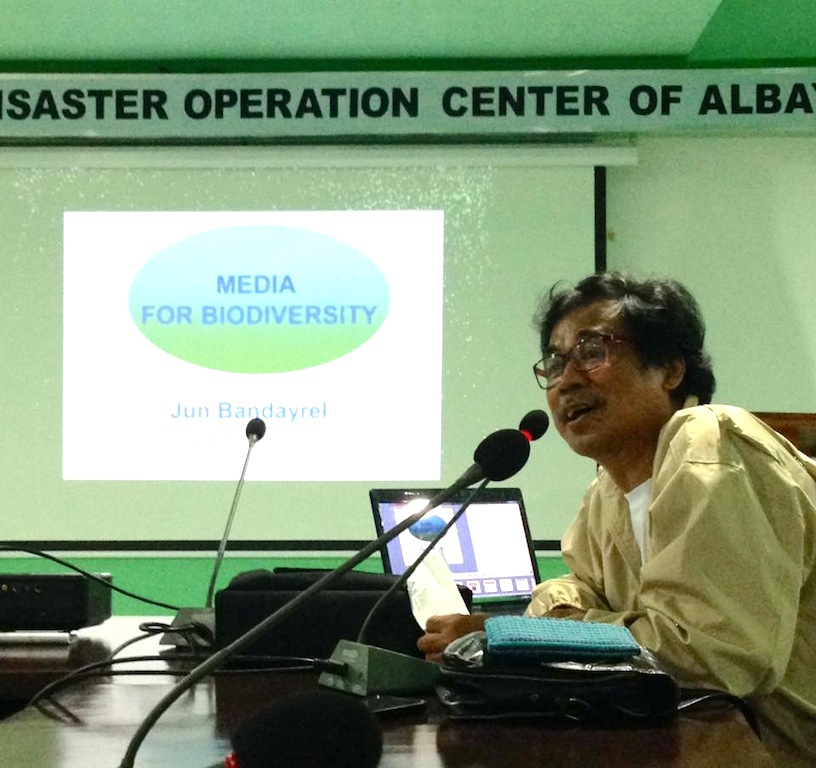LEGAZPI CITY, Albay – A new partnership was formed to set-up the Center for Philippine Biodiversity Journalism (CPBJ) to increase the quality and quantity of biodiversity reporting at the same time help strengthen the protection, conservation and management of key biodiversity areas and wildlife throughout the Philippines.
Launched in Legazpi City on Friday, the center will provide a venue for journalists, academe, biodiversity experts and people in the communities to discuss the importance of raising public awareness and policy engagement on issues affecting Philippine wildlife and preserving natural beauty and diversity.
The CPBJ is a partnership between the Green City Advocates for Wildlife and Environment Protection (GCA) and the Philippine Network of Environmental Journalists (PNEJ). Both are nongovernment organizations dedicated to raising quality environmental reports and environment protection awareness.
“In the Philippines, specialization and research-based coverage for diversity are sacrificed for general beat or story assignment,” said CPBJ co-founder Pergentino Bandayrel, who is also the National Editor of the Philippine Daily Inquirer.
Bandayrel said the center is aimed to provide a platform of engagement and discussion among the journalists, scientists, policy makers and the public to raise understanding and trigger action on pressing matters such as “protecting the country’s natural resources before they disappear.”
On the other hand, PNEJ President Imelda Abano said: “The science of biodiversity has not been mainstreamed in the Philippines.”
Despite the increasing number of reports on Philippine wildlife and biodiversity, there is still a gap in terms of providing the holistic picture and how it relates to the country’s sustainable development as well as the global threat of climate change, according to Dr. Elena Pernia’s lecture on media behaviour.
Citing Pernia’s discussion on biodiversity, Bandayrel stressed to local and national media during the briefing that “ biodiversity as a journalistic topic is not a priority content unless during times of disasters or sometimes, when illegal poachers are caught”. Still, there is a struggle for space in print and airtime in broadcast media for publishing stories on biodiversity, he added.
The center aims to hold monthly forums in different provinces to gather local and national media in a collaborative discussion together with the community.
“The center aims to help increase the reach, quality and quantity of reports in the country, dubbed as one of the global biodiversity hotspots,” Abano added.
Pressing issues in the Philippines include but are not limited to Inland wetlands, forests, agro-biodiversity, cave systems, coastal and marine areas, invasive alien species, and access on benefit sharing, Bandayrel explained.
The Philippines is one of 17 mega-diverse regions in the world with 440 endemic species and 67 globally significant congregation of mangroves, seaweeds, corals, freshwater and reed species, birds and mammals, among others. However, this are constantly threatened by rapid urbanization and industrialization as well as weak policies to prevent illegal trade and poaching in and out of the country.
In 2011, a scientific expedition by the California Academy of Sciences helped discovered 300 new species in the country, highlighting the rich diversity in the country that are yet to be documented so they can be protected.
“People are the cause of the problem but people can also provide the solution. So for journalists, there is a huge opportunity to tell a better narrative that will highlight biodiversity issues and provide solutions,” Bandayrel said.
Anna Valmero
Latest posts by Anna Valmero (see all)
- Thousands took to the streets of Paris for climate action - December 13, 2015
- Rallies call for climate change action - December 12, 2015
- Climate-induced migration must be at the core of the Paris deal - December 11, 2015



